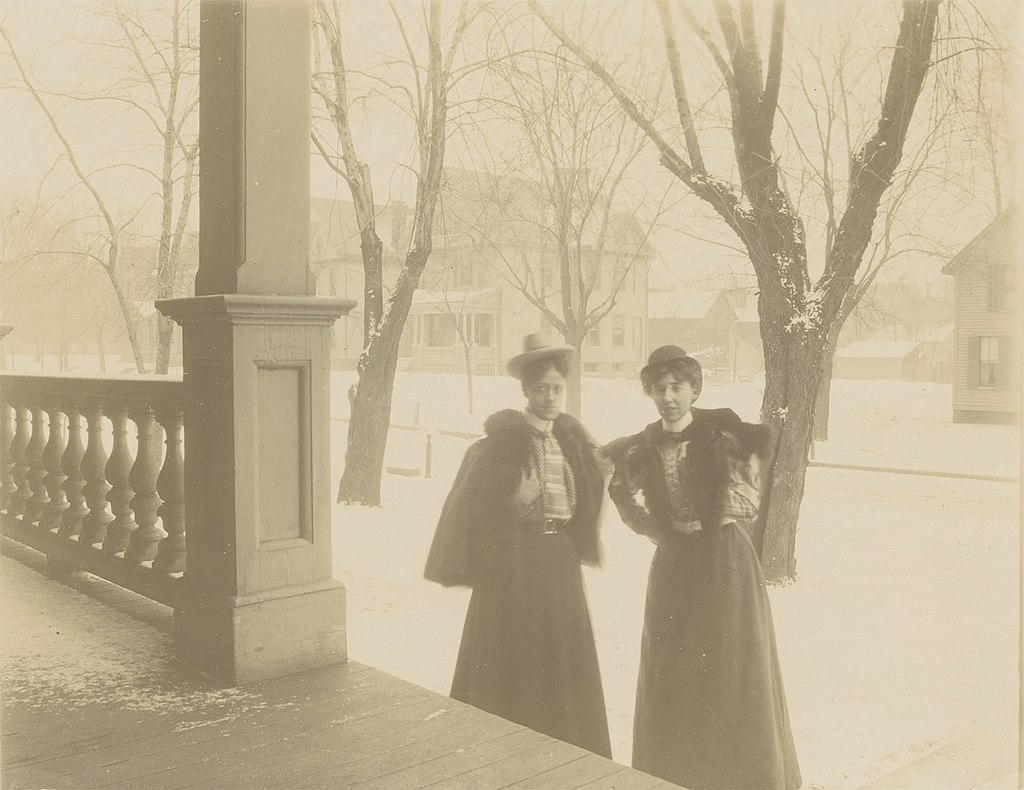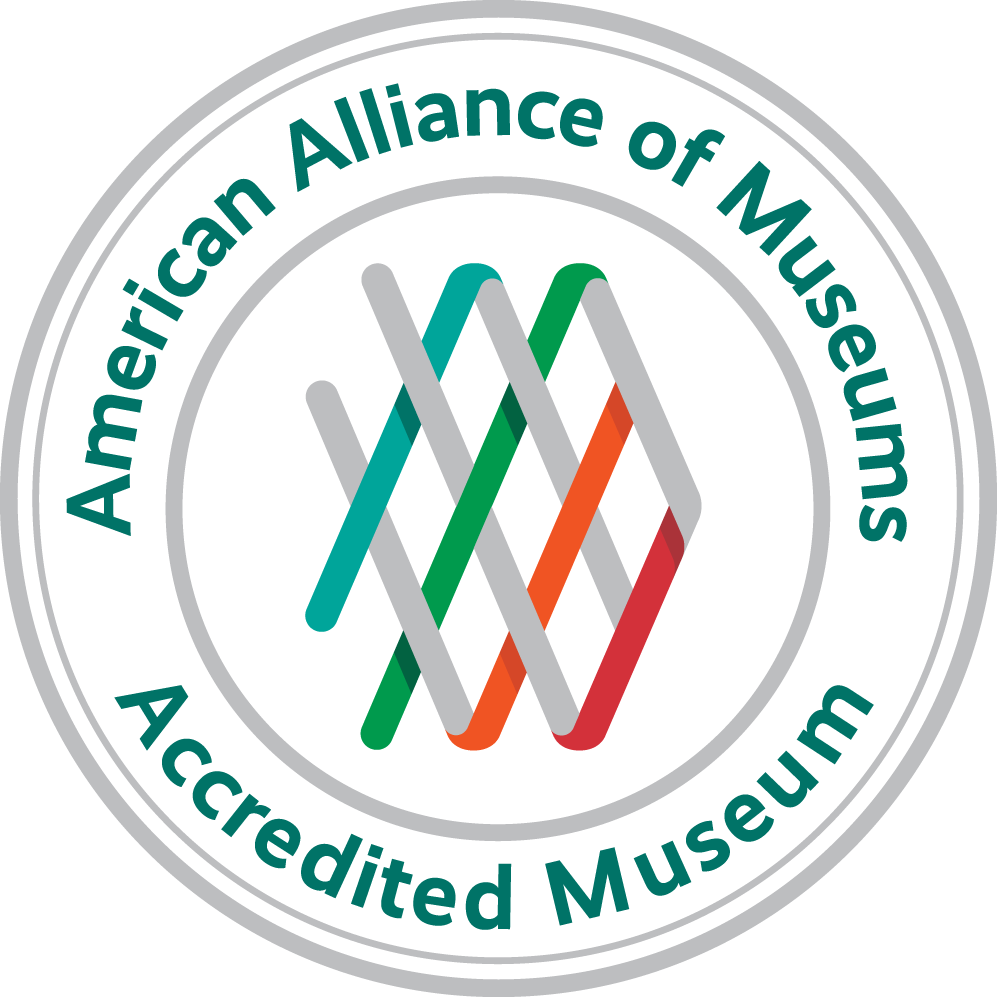Maud Hunt Squire: Illustrator, Painter, Printmaker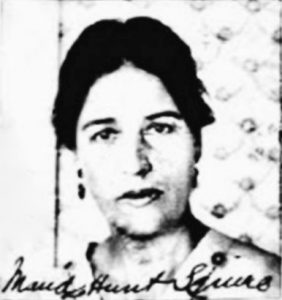
The daughter of a musician, Maud Hunt Squire was born in Ohio in 1873. She was second in her class at the Art Academy of Cincinnati, where she studied under Lewis Henry Meakin and Frank Duveneck. Her intaglio prints and her work in colored pastels gained her international notice in the art community. While still a student, Maud began working as an illustrator (along with Ethel Mars), and by 1907 she was exhibiting and selling her works in Paris and America.
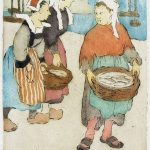
Not only an accomplished artist, Maud was also a talented musician and spoke multiple languages. Her works are shown in multiple museums, including The Jule.
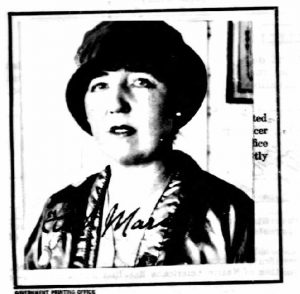
Ethel Mars: Bohemian Artist and Teacher.
Ethel Mars, born in Springfield, Illinois in 1876, was a talented artist from childhood. The daughter of a railroad clerk, her childhood works won her prizes at the Illinois State Fair. After grade school, she gained a scholarship to the Art Academy of Cincinnati, where she learned drawing, illustrating, and painting under Meakin and Duveneck.
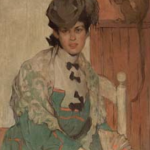
An ambulance driver at the beginning of WWI, Ethel lived a rather bohemian lifestyle, often dying her hair purple and wearing orange lipstick. Her work, like her partner’s, is a part of collections all over the world.
Ethel and Maud: Miss Furr and Miss Skeene
Ethel Mars and Maud Hunt Squire began their lifelong relationship after meeting at the Art Academy of Cincinnati, where they began working together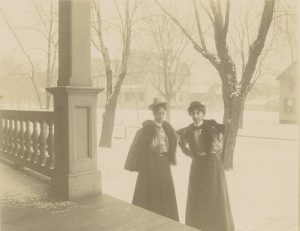 as illustrators. After their graduation, they were immediately hired by publisher R.H. Russell, and their illustrations were shown in a joint exhibition in the Cincinnati Art Museum in 1903.
as illustrators. After their graduation, they were immediately hired by publisher R.H. Russell, and their illustrations were shown in a joint exhibition in the Cincinnati Art Museum in 1903.
In 1906 the couple moved to France and began traveling through Europe.
Their careers excelled throughout their lives, and both women exhibited their works in Paris and the United States. During their visit to Munich, Ethel learned about color woodcut prints and began teaching the techniques to other American artists in Paris.
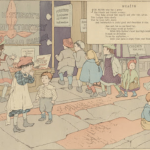 They became a part of Gertrude Stein’s circle, making friends with Pablo Picasso and Henri Matisse. Stein immortalized the pair in her poem “Miss Furr and Miss Skeene,” believed to be the first work of literature to use the word “gay” as a descriptor of same-sex relationships.
They became a part of Gertrude Stein’s circle, making friends with Pablo Picasso and Henri Matisse. Stein immortalized the pair in her poem “Miss Furr and Miss Skeene,” believed to be the first work of literature to use the word “gay” as a descriptor of same-sex relationships.
As the outbreak of World War I put more pressure on the couple, Ethel and Maud relocated to Provincetown, Massachusetts. It was here that Maud created her first and only woodblock prints, using modulated colors to depict the scenes in Provincetown. The women became part of a group of artists known for their white line woodcuts, called the Provincetown prints. The seaside town’s bohemian art community soon became internationally known, possibly thanks to the Squire and Mars’ reputation.
Image: Provincetown print Example
After the war, they were able to move permanently back to Vence, France, except for a brief time in Grenoble during World War II. While Maud stopped her artistic endeavors in the 30s, Ethel drew portraits and landscapes well after the war. The two lived and thrived in France until their deaths. They are currently buried with one another in the cemetery of Saint-Paul-du-Vence.
Throughout their lives, these women adapted and molded their own artistic talents and voices. Still, one thing remained constant. Their relationship with each other and their artistic collaboration helped shape their work and impact in the art community. With color techniques that have contributed to modern color prints, and illustrations that still serve as an example of capturing a child’s spirit, Maud and Ethel’s works continue to resonate in today’s art community.
Ethel and Maud at The Jule
Ethel Mars’ and Maud Hunt Squire’s works grew and shifted as the women traveled through Europe and America. Their subject matter and their technique seem to have changed with their location and their experiences. These works are a part of the collection at The Jule.
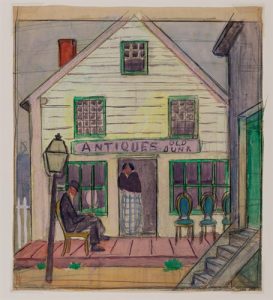
Mars, Ethel 1876-1959 Untitled (Storefront) DATE: ca. 1916-19
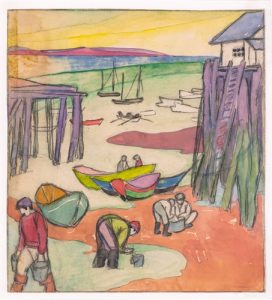
ARTIST Squire, Maud Hunt 1873-1934 Untitled (Clam diggers, Provincetown) DATE: ca. 1915
These works were both done during the couple’s time in Provincetown. What similarities do you see? What differences?
The artists’ styles changed as they traveled the world. How do these works differ from other works seen throughout the article?
In Stein’s poem, “Miss Furr and Miss Skeene,” Squire is Miss Georgine Skeene, who loves to travel. Mars is represented by Miss Helen Furr, who likes to stay in one place. Can you see those personalities in these two paintings?
References
https://en.wikipedia.org/wiki/Maud_Hunt_Squire
https://maryryangallery.com/artists/maud-hunt-squire/
https://en.wikipedia.org/wiki/Ethel_Mars_(artist)
https://maryryangallery.com/artists/ethel-mars/
https://www.juliehellergallery.com/ethel-mars
